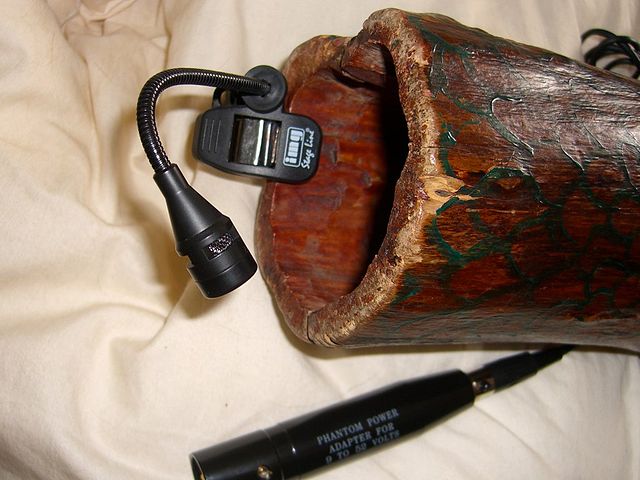There are a number of well-developed microphone techniques used for recording musical, film, or voice sources or picking up sounds as part of sound reinforcement systems. The choice of technique depends on a number of factors, including:The wish to capture or avoid the collection of extraneous noise. This can be a concern, especially in amplified performances, where audio feedback can be a significant problem. Alternatively, it can be a desired outcome, in situations where ambient noise is useful.
Degree of directionality of pickup: in some settings, such as a home video of a birthday party, the person may wish to pick up all the sounds in the room, which would make an omnidirectional mic desirable. However, if a TV news crew is filming a reporter at a noisy protest, they may only wish to pick up her voice, making a cardioid mic more desirable.
Choice of a signal type: Mono, stereo or multi-channel.
Type of sound-source: Acoustic instruments produce a sound very different from amplified electric instruments, which are again different from the human voice.
Sound pressure levels: a mic that is recording Baroque lute will not face high sound pressure levels, which could lead to distortion; on the other hand, a mic being used to record heavy metal drumming or low brass may face extreme sound pressure levels.
Situational circumstances: Sometimes a microphone should not be visible, or having a microphone nearby is not appropriate. In scenes for a movie the microphone may be held above the picture frame, just out of sight. In this way there is always a certain distance between the actor and the microphone.
Processing: If the signal is destined to be heavily processed, or "mixed down", a different type of input may be required.
The use of a windshield as well as a pop shield, designed to reduce vocal plosives.

A didgeridoo miked with a small phantom powered condenser microphone that clips onto the instrument.
Lloyd Thayer playing National Steel guitar on a radio show.
Peter Brötzmann with a tenor saxophone and two microphones (a Neumann U 87 for the bell, an Electro-Voice RE20 for the body)
A parabolic microphone used to capture sounds on the field during a football game.
A microphone, colloquially called a mic, or mike, is a transducer that converts sound into an electrical signal. Microphones are used in many applications such as telephones, hearing aids, public address systems for concert halls and public events, motion picture production, live and recorded audio engineering, sound recording, two-way radios, megaphones, and radio and television broadcasting. They are also used in computers and other electronic devices, such as mobile phones, for recording sounds, speech recognition, VoIP, and other purposes, such as ultrasonic sensors or knock sensors.
Shure Brothers microphone, model 55S, multi-impedance "Small Unidyne" dynamic from 1951
David Edward Hughes invented a carbon microphone in the 1870s.
Humphrey Bogart, Jack Brown, and Lauren Bacall with RCA Varacoustic MI-6203 ribbon microphones broadcast to troops overseas during World War II.
Inside the Oktava 319 condenser microphone








